It’s been said that your musical preferences are formed during the teen years. If that’s true, teenagers in 1971 were blessed with rock music in its heyday, a time when established and emerging rockers launched a flurry of masterpieces that still sound as fresh and relevant as they did 50 years ago.
Some of those bands who released albums that year included now-classic rock acts Led Zeppelin, Rolling Stones, The Who, Jethro Tull, The Allman Brothers, the Doors, and other legendary music-makers of that era. It was also a time when most of these artists focused more on honing their craft rather than indulging in scandalous behavior as a cheap marketing ploy to sell crappy music.
Nowadays, there have been too many instances when marginally talented pop and rock stars achieved fame and fortune only because of their looks or bad manners, or both, instead of being musically gifted. Can you imagine how the market would react to a young Peter Townshend or Jethro Tull’s Ian Anderson, both not exactly Bieberesque, trying to make it big in today’s music business? But looks fade as time marches on, and so will the music of the divas and the hunks who dominate today’s radio playlists.
For the bands featured in this article, most of them reached their crowning achievement or were on the verge of doing in 1971. Unfortunately, two of the artists, Janis Joplin and Jim Morrison, fell victim to the curse of 27 and departed from this rock before or shortly after their albums were released that year.
Some may argue that other rockers should be included in the class of ’71 or that those who were selected don’t deserve this prestigious honor. Perhaps they’re right. But let’s be honest: any list of top recording artists is totally subjective, and high album sales figures don’t give recording artists carte blanche membership to this exclusive club. This compilation was based on the music’s longevity in the annals of rock, it’s influence on later generations of rock bands, and, when stripped all down to the basics, this music was, and still is, pure ear candy. And what’s truly amazing is that most of these bands are still performing in some form or fashion-a half-century later.
So without any further adieu, let’s find out why 1971 was the year rock music kicked ass.
The Who–“Who’s Next”
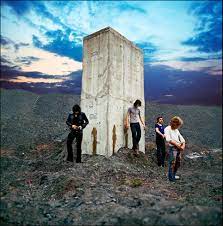
After the commercial and critical success of The Who’s concept album “Tommy”, singer/songwriter and guitarist Peter Townshend began working on a similar project called Lifehouse, a multi-media rock opera. However, that project failed to materialize due to issues with the band’s manager and the complexity of stitching together songs for a follow-up concept album. Instead, the band opted to use some of the songs to produce the now-classic “Who’s Next”.
What the band delivered was an embarrassment of riches, with the synthesized, power-chord rock anthems of “Won’t Get Fooled Again” and “Baba O’ Riley”, country-tinged “Goin’ Mobile”, the hook-filled ballad “Behind Blue Eyes”. and other songs that have stood the test of time. While not part of the Lifehouse portfolio, bassist John Entwistle’s “My Wife” was a welcome addition to the album tracks, particularly highlighting why drummer Keith Moon was one of the best in the business. Critics claim that this was the band’s greatest album, and it’s hard to argue with that assessment.
The Rolling Stones-“Sticky Fingers”
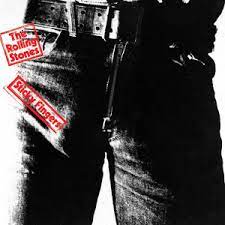
“Sticky Fingers” was the first of the band’s four studio albums released in the early to mid-’70s that led to the Rolling Stones claiming the distinction of being “the greatest rock ‘n roll band in the world”. “Sticky Fingers” was a rich mix of rock, blues and country music that quickly dissed any talk that the Stones were past their expiration date. In fact, the album was a testament to the Stones’ uncanny ability to change with the times, and, in the case of “Sticky Fingers”, leading the way. Unlike past efforts, there were other forces at work that resulted in the record being one of the Stones’ two best albums (the other was the followup “Exile on Main Street”).
First and foremost was the addition of Bluesbreaker guitarist Mick Taylor, who replaced the deceased guitarist Brian Jones. Taylor’s melodic treatment of blues-rock guitar gave the Stones a formidable edge in the escalating guitar-driven rock scene during the ’70s. Taylor’s contributions on the album’s “Can’t You Hear Me Knockin”, “Bitch” and “Sway” fully complemented Mick Jagger’s snarling vocals and Keith Richards’ trademark rhythm guitar chops. While the song didn’t appear until the Stones’ “It’s Only Rock ‘n Roll”, “Time Waits For No One” was perhaps Taylor’s finest solo guitar piece that Carlos Santana could only dream of playing. Taylor parted company with band after that album, and gone was its secret weapon, as Keith and replacement ex-Faces’ guitarist Ronnie Wood were no match for Taylor’s virtuosity.
Another factor was the Stones’ boozy and drug-fueled relationship with country-rock crooner Gram Parsons, who undoubtedly influenced such gems as “Wild Horses” and “Dead Flowers”. The album’s biggest hit “Brown Sugar” reflected another significant change in the band’s musical direction, which included expanded use of a horn section (Bobby Keys and Jim Price) and various keyboardists, both prominent in later works. Speaking of “Brown Sugar”, an alternate version exists featuring Eric Clapton on slide guitar. While that version was passable, the band wisely decided to use the one that appears on the album. It should also be noted that the album cover (a risque picture of a man in tight-fitting jeans with a zipper that opened to reveal his underwear) was conceived by the iconic pop-art artist Andy Warhol.
Led Zeppelin-“Led Zeppelin IV”
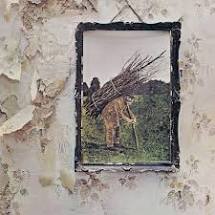
Like its other rock contemporaries, Led Zeppelin finally got it right in 1971, with its fourth album entitled (what else?) “Led Zeppelin IV”. With this album, the band successfully combined its earlier blustering blues-rock outings (“Led Zeppelin I and II”) and its excursion into acoustic folk music (“Led Zeppelin III”). The album’s signature cut “Stairway to Heaven” and other songs (“Rock and Roll” and “Black Dog”) continue to be played with regularity on FM and satellite radio playlists. More importantly, “Led Zeppelin IV” cleared the path for the band to move beyond its heavy metal origins to explore other musical forms on subsequent albums.
Robert Plant demonstrated his versatility as a vocalist, ranging from the English folk-inspired song “The Battle of Evermore” (featuring the late Fairport Convention vocalist Sandy Denny) to the mellow acoustic ballad “Going to California” to the rock stomper “Rock and Roll” (featuring the late Rolling Stones pianist Ian Stewart). Guitarist Jimmy Page showered the album with riff upon riff but also knew when to take it down a notch with enchanting acoustic fingerwork. Drummer extraordinaire John Bonham’s hard-hitting style and bassist/keyboardist John Paul Jones rounded out the band’s music on an album that many critics have hailed as one of the greatest albums of all time.
The Doors -L.A. Woman
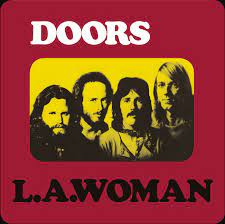
On the other side of the pond, American rock bands were not about to play second fiddle to their Brit counterparts. One of those bands was the southern California-based The Doors (named after English philosopher Aldous Huxley’s “Doors of Perception”). With a string of chart-toppers under its belt (“Light My Fire” “When the Music’s Over”, “Touch Me”, to name a few), the band was among those that dominated the ’60s rock era with its unique brand of psychedelic rock mixed with blues, jazz and country. The Doors also gained notoriety with the antics of its frontman Jim Morrison, rock’s bad boy/poet laureate, which only added to the band’s appeal. But Morrison’s bizarre behavior finally took its toll on the band in 1969, the year when many radio stations blacklisted Doors’ songs and concert attendance waned as a result of Morrison’s arrest for profanity and indecent exposure during a concert in Miami.
Following the end of Morrison’s trial on the charges in November 1970, the band returned to the studio to record what is considered to be its best album, one that dispensed with drawn-out and complex arrangements found in earlier works. Instead, Morrison, keyboardist Ray Manzarek, guitarist Jim Krieger and drummer John Densmore took a blues-rock approach that produced mega-hits “L.A. Woman”, “Love Her Madly”, and “Riders on the Storm”. It should be noted that the band wanted the James Brown-influenced song “The Changeling” to be the album’s first single but it was decided that “Love Her Madly” would take that honor.
“L.A. Woman” turned out to be the band’s swan song. Three months after its release in April, Morrison was found dead in a bathtub in Paris due to an apparent heart attack. The surviving members of the band tried to keep those creative fires burning. But without Morrison’s songwriting genius, charismatic stage presence and powerhouse vocals, the Doors had no choice but to disband in 1973. Years later, the band briefly reformed with The Cult singer Ian Astbury taking over Morrison’s role.
Janis Joplin-“Pearl”
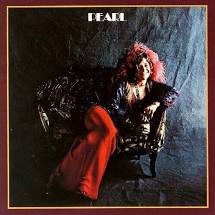
Janis Joplin, the queen of soul-drenched blues-rock, continued to reign supreme with her second solo studio album “Pearl” at the beginning of 1971, a stirring collection of blues, soul, funk, R&B and country songs that took the number one spot on the Billboard 200 for nine weeks. Joplin, however, did not get to bask in the warm glow of the album’s success, as she died three months earlier from a heroin overdose.
In a few short years, Joplin went from being an up-and-coming singer in the burgeoning ’60s San Francisco rock community to a global rock diva, propelled by her head-turning performances at Monterrey Pop Festival in 1967 and the Woodstock festival two years later, as well as her studio output with Big Brother and the Holding Company and the Kozmic Blues Band which included such hits as “Piece of My Heart”, “Cry Baby”, and “Ball and Chain”. Joplin’s ability to channel the spirit of Black female blues singers from a bygone era had easily found an audience that was open to rock interpretations of American blues.
With “Pearl”, Joplin performed with a new band called The Full Tilt Boogie Band and was produced by Paul Rothchild, who was also The Doors’ producer. Singer/multi-instrumentalist/producer Todd Rundgren was set to produce “Pearl” but that didn’t happen due to a creative spat between Rundgren and Joplin.
Joplin’s final album scored a massive hit with the country blues ballad “Me and My Bobby McGee, written by Kris Kristofferson and Fred Foster. The song, which Joplin plays acoustic guitar, has been covered by many artists over the years, most notably The Grateful Dead which joined Joplin and her band, Delaney & Bonnie and other musicians on a Canadian concert tour in 1970. Other album cuts included “Get It While You Can”, “Move Over”, “Trust Me” (which R&B artist Bobby Womack had written for Joplin), and the self-confessional a cappella “Mercedes Benz”, the last song she recorded before her death.
Jethro Tull — “Aqualung”
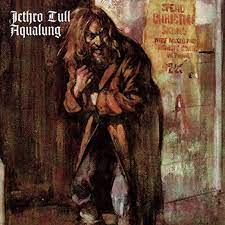
During the recording session of “Aqualung”, blues-rock-turned-progressive-rock band Jethro Tull was recording its fourth album in the same studio as Led Zeppelin. Guitarist Martin Barre was preparing to lay down a solo for the album’s title track when Led Zep guitarist Jimmy Page stopped by and peeped through the glass window of the studio. Realizing that one of rock’s greatest guitarists was watching his performance, Barre nervously unleashed what is considered one of the top guitar solos of all time.
Barre’s blistering guitar solo on Aqualung is just a small sample of what critics and fans alike say represents the best of Jethro Tull, which sold more than seven million albums worldwide. Back in ’71, one would be hard-pressed not to find “Aqualung” on a teenager’s record turntable or 8-track player. The album signaled a departure from the band’s earlier albums, with the addition of more acoustic cuts such as “Cheap Day Return” and “Slipstream”. However, lead singer/flutist Ian Anderson and the band still paid homage to the riff-laden rockers like “Aqualung”, “Locomotive Breath” and “Hymn 43” that resulted in heavy rotation on FM radio and sold-out shows at major venues.
It’s interesting to note that Anderson tried to dispel the notion that “Aqualung” solely focused on faith and religion for its material. Tired of disputing claims that the record was a concept album, the band intentionally made one for its next record “Thick as a Brick”. In Anderson’s words, the album was “a kind of a spoof, a send-up, of the concept album genre.”
Yes-“The Yes Album”
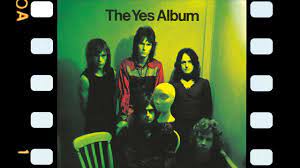
Yes’s third album, entitled “The Yes Album”, marked do-or-die time for the British progressive rock band. The band desperately needed a hit album, as its record company was ready to give them the ax after the release of two commercial flops. Their saving grace was guitarist extraordinaire Steve Howe, who replaced Peter Banks in 1970. Howe could play anything the band threw at him: rock, folk, country, classical, and even Portuguese-influenced acoustic numbers.
With Howe on board, lead vocalist John Anderson, bassist Chris Squire, keyboardist Tony Kaye (replaced by Rick Wakeman on the followup album “Fragile”) and drummer Bill Bruford produced “The Yes Album”, widely acclaimed as a huge commercial and critical success in both the U.K. and the U.S., selling more than one million copies. The album’s material fused a variety of musical styles including funk, jazz piano and acoustic music, with Anderson, Squire and Howe singing three-part harmony on most of the record. Album highlights include “I’ve Seen All Good People” and the electronic-sounding “Starship Trooper”, which was accomplished by running the guitar backing track through a flanger. Also, Howe nailed it with his acoustic instrumental “Clap”, influenced by guitar greats Chet Atkins and Mason Williams.
“The Yes Album” set the stage for the band’s signature sound that was found on its masterpiece “Fragile” and later recordings, as well as spawning a wave of other prog-rock bands.
The Allman Brothers-Live at Fillmore East
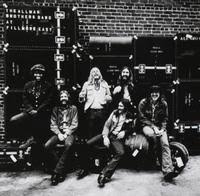
The Allman Brothers’ double album “Live At Fillmore East” was and is still viewed as one of the best live albums of all time. The Southern rock band had released two studio albums prior to its live performance recorded at New York City’s Fillmore East, one of two music venues run by venerable concert promoter Bill Graham. The album, recorded in three nights in March, featured extended versions of studio cuts “In Memory of Elizabeth Reed” and “Whipping Post”, along with “Statesboro Blues” and other blues covers and originals.
The Allman Brothers were known as a Southern rock band or a jam band, but the band’s members did not want labels pinned on them. They were basically a rock band and a damn great one. This was a band awash with talent and vision that included guitarist Duane “Skydog” Allman, an accomplished session musician and a major contributor to Derek & The Dominos’ “Layla and other assorted love songs” album; his brother and keyboardist/vocalist Gregg Allman, who was born to sing the blues; guitarist Dickey Betts, whose jazz/country-inspired guitar licks was the perfect complement to Allman’s soaring slide work; bassist Berry Oakley, who died shortly after Duane’s death in a motorcycle accident; and drummers Butch Trucks, whose nephew is guitarist Derek Trucks, and Jai Johanny Johanson.
Fun fact: When the Fillmore East closed its doors for good that year, the Allman Brothers were invited along with other major acts to perform a final concert. One of the bands, The Beach Boys, told Graham that it would not perform unless it was the show’s headliner. But the cantankerous Graham told the sun-bleached surf rockers to go pound sand because the Allman Brothers would be the show’s closing act.
Alice Cooper-“Killer”
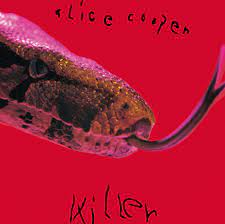
Last but not least is shock-rock pioneer Alice Cooper, whose fourth studio album “Killer” shot up the Billboard 200 album chart (#21) with two straight-ahead rockers “Under My Wheels” and “Be My Lover” on the Billboard 100 chart when released in November. At that time, the band was Alice Cooper until lead singer Vincent Furnier later adopted the band’s moniker as both his legal and stage name.
Known for its glitzy theatrical presentation of rock ‘n roll, Alice Cooper’s live performances were a sight to behold: the leather-and-Spandex-clad band wore enough facial make-up that would make RuPaul proud. To further entertain its audience, the band would chop off baby dolls’ heads with a guillotine and dance on stage with a live boa constrictor. The band’s absurdist brand of entertainment would rub off on the likes of Kiss, Rob Zombie, Marilyn Manson and other acts who wanted to simultaneously create both spectacle and music.
The “Killer” album featured a tribute to The Doors’ Jim Morrison, Cooper’s friend who died the same year the album was released, with the spaghetti Western-like “Desperado”. The album’s “Dead Babies” shocked the over-30 crowd which only made the band more loveable to a younger generation. As the years passed, Alice Cooper’s shock-act wore thin with fans seeking the Next Big Thing, though the Coop did have bit of a comeback with the ’80s hit “Poison”. ..
Love it or leave it, “Killer” made Alice Cooper a household name in ’70s rock. Even the Sex Pistols’ Johnny Rotten, who also has a reputation for being a bit unconventional, said the album was one of his all-time favorites.
